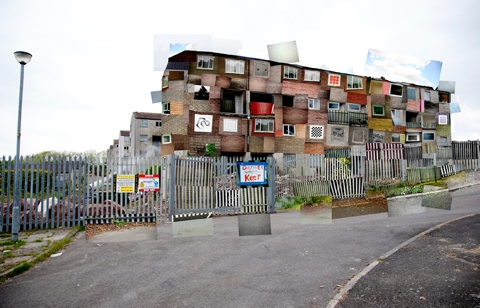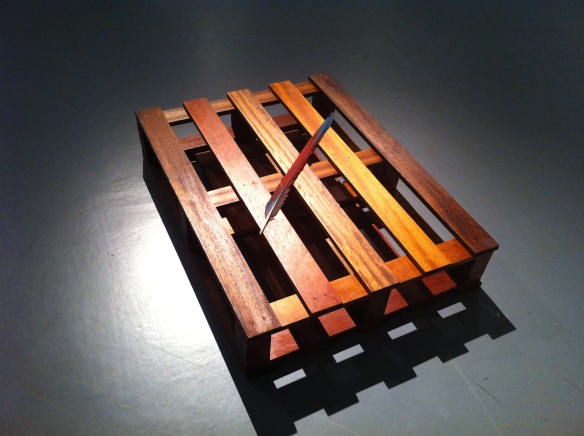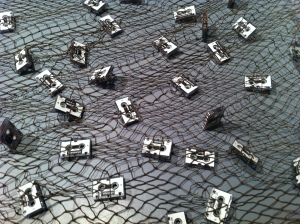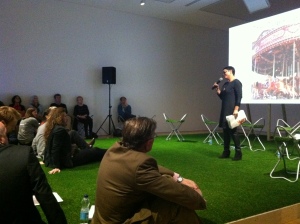 As the Engage (National Association for Gallery Education) goes into the second day of its annual conference in Cardiff – Landing Place – it seems like a good time to look at how art reaches audiences and how they react.
As the Engage (National Association for Gallery Education) goes into the second day of its annual conference in Cardiff – Landing Place – it seems like a good time to look at how art reaches audiences and how they react.
I have to confess that I’ve been a bit too awash with various projects to make it to the conference, but did get to the pre-conference social at Ffotogallery’s Turner House Gallery two days ago to meet up with a very lively group of gallery educators who make up the coal face of visual arts mediation and interpretation across the UK.
Before everyone got even more lively on the mulled cider on offer they were treated to a quick overview of what the education team at Ffotogallery have been doing. And here I have to declare a big fat interest. Last year I asked them if they’d be interested in working with me on an outreach project as part of a public art programme I’m managing in my home town of Penarth. A social housing project called the Billy Banks has passed its sell-by date and is being re-developed into the new Penarth Heights. I’ve been anxious to fold in the people who used to live there, to capture the history of what was a bold experiment in social housing back in the 70s, and to link the project to the wider town. Before the bulldozers had razed the last traces of the old site to the ground, Ffotogallery sent six artists in to six local schools, taking them on site visits and getting them to make their own very individual responses to the change. You can see the results here.To say they exceeded my wildest expectations is an understatement, underlined by the massive grins on the faces of the pupils who came to the launch event at the end of last month.
For some of those young people this was their first contact with an artist. And here’s the thing. Most artists don’t make their primary living form making and selling their work. It’s through education – teaching, artist-in-residence projects and activities that may seem at a tangent to their artistic practice, that many earn their daily crust. And for artists like Matt Wright, Faye Chamberlain, Chiara Tocci, Michael Iwanowski, Ewan Jones Morris and Nat Higgins this is an opportunity to work directly with a new audience. For the schools, of course, it’s a rare opportunity to work with new media and processes, as well as giving pupils and teachers an insight into how how artists work and adding a new dimension to curricular work they may already be working with. I just hope that this is the kind of work that registers with the Welsh Government’s New joint review to look at broadening access to the arts in education.
 But of course gallery education isn’t just for the children. Last week I took myself northwards to Aberystwyth Arts Centre for a talk by artist David Garner. His current show Future Tense is dense with meanings, as is much of his work. For this body of work he has thrown all of his thinking about the impact of globalisation into the creative furnace to produce a series of works which, in the pared back shell of the gallery, set up conversations with each other and send out narrative threads across the space.
But of course gallery education isn’t just for the children. Last week I took myself northwards to Aberystwyth Arts Centre for a talk by artist David Garner. His current show Future Tense is dense with meanings, as is much of his work. For this body of work he has thrown all of his thinking about the impact of globalisation into the creative furnace to produce a series of works which, in the pared back shell of the gallery, set up conversations with each other and send out narrative threads across the space.
Looking at them without recourse to the information sheet and before the scheduled gallery talk, they spark off a range of thoughts and responses, informed by my own baggage of experience. And then I start to consider them as distinct objects. All are made with an exceptional attention to detail so that I found myself looking for the joins, the interventions with the found objects that transform them to something else – a shift in scale in a child’s school desk,; the dark and exotic woods of what looks, at first glimpse, like a normal wooden pallet but has tiny dowel pegs where the roughly banged in pegs would be; the retro paint on the base of a giant spike at human height. piercing hundreds of time cards (the punched out chips in a glass jar nearby).
 When Garner starts to tell the gathered audience (I think there were about 30 of us but we were walking and talking so head-counting was tricky – it was a good turnout anyway), he starts to feed us details, thought processes, material information that adds another layer. There are some things intended by the artist that will never be obvious to the gallery viewer but, half an hour over time, we leave with a sense of having taken something new on board and that an exchange has occurred.
When Garner starts to tell the gathered audience (I think there were about 30 of us but we were walking and talking so head-counting was tricky – it was a good turnout anyway), he starts to feed us details, thought processes, material information that adds another layer. There are some things intended by the artist that will never be obvious to the gallery viewer but, half an hour over time, we leave with a sense of having taken something new on board and that an exchange has occurred.
Back to Cardiff and even further back in time. As part of the current Artes Mundi prize offering at National Museum Cardiff shortlisted artist Apolonija Šušteršič managed to do what no-one else has managed in over 25 years. As part of her presentation for Artes Mundi she created a new project and an archive around the development of Cardiff Bay and the barrage that changed the view of what was once Cardiff’s Docks forever. As part of this project she filmed the pro and anti-barrage protagonists and, for Talk Show, she invited both sides to look back at the changes to Cardiff Bay. This was to be the first time that both sides had ever been able to share a platform, filmed live and unedited for an hour, the ensuing debate showed that feelings around the development that displaced people and birds (Šušteršič remained neutral, although she has her own views on economically driven development, I am less so) are still raw.
So within the context of a gallery exhibition, the outsider’s eye, in the form of the artist’s camera, brought a new perspective to an understanding of how places get made and un-made. And the events around art practice, when artists are allowed the opportunity to add another dimension to work that is already interesting, leave everybody better off.
















